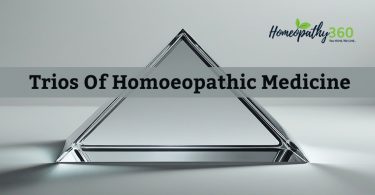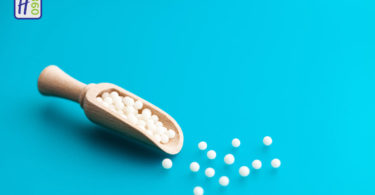Author: Prof. (Dr.) Goutam DasM.D, (Homoeopathy)
[Abstract: This article includes the clinical understanding of the study of Homoeopathic Materia Medica, on the light of the teaching of our Organon of Medicine & Homoeopathic Philosophy that, whatever it maybe the name of the disease or the pathology; Homoeopaths needs to perceive, what is curable in disease and what is curative in medicine; they’re the clinically verified signs & symptoms of a remedy, the power, the essence, the image, the very nature of the sickness, which are only to be counter as stronger & similar in manifestations but different in kind for restoring the sick to health homeopathically, also expressed in this article.]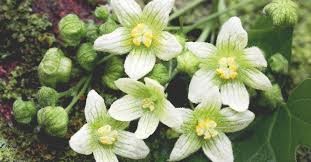
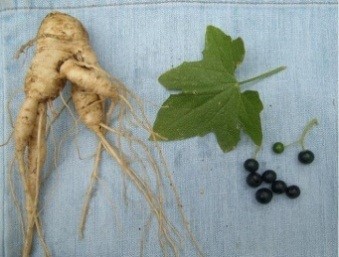
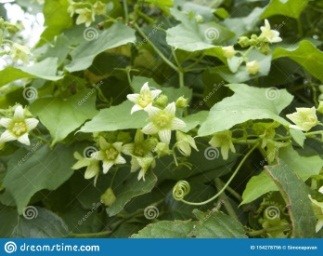
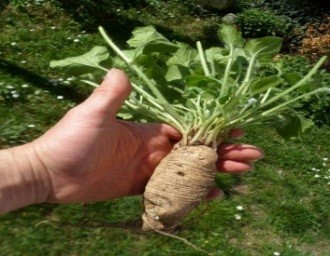
Introduction:
Sickness [1] are those abnormal signs and symptoms of the Life [2], develop due to constant improper adjustment in its environment to maintain its normal growth and development for the higher purpose of its existence according to the individual’s acquired and hereditary qualities, as per their lifestyle hazards. Each and every patient and every medicine have had their own peculiar nature of sickness as Bryonia alba also and that is to be learn to clearly perceives in each individual case of disease as the knowledge of disease indication and in each individual medicine as the knowledge of medicinal power, Homeopathically.
Bryonia Description: Bryonia is a perennial climbing toxic herb, belonging in Cucurbitaceae family, having small whitish-yellow flowers, growing in the mouth of June, July. The fruit is Globse and black. The male flower being on long peduncles and the female are large than the male. The thick, white fleshy taproot or primary root is used for medicinal purpose which has a strong, disagreeable bitter odor and taste which disappear on drying and can cause death within hours by the inflammation of the digestive system. Habitat: It belongs to central and southern European and cultivated in Germany, France, Spain, Italy. Parts used: The fresh root before flowering is used in mother tincture preparation. An alkaloid & various fatty acids are the active chemical principle of Bryonia. History & Authority: Bryonia was known to the ancient, Dioscorides, the Greek physician used it for dropsy. It was used as a cathartic, for rheumatic conditions, as a purgative, for pleurisy. Dr. Hahnemann introduced Bryonia in 1816.Homoeopaths use it in cholera, typhus, typhoid, pneumonia, rheumatic problems, headache, neuralgias and in nineteenth century Allopaths also used Bryonia for the same. Hippocrates used Bryonia in his repertories remedies. Bryonia was used medically by the Ancient Greeks and Romans for the treatment of epilepsy, vertigo, gout, paralysis, hysteria, wounds and coughs. The word ‘Bryonia’ means ‘growing rapidly’, as the stem grows rapidly and the ‘alba’ from Latin word ‘albus’, means ‘white’ as the roots and flowers are whitish-yellow. ([3] Allen’s Encyclopedia Materia Medica, Vol.II. P.249)
Every medicine has a sphere of action, a peculiar nature whereby it differs from other medicines and hence it becomes suitable to complaints of one class and unsuitable to those of another. It is like the nature of human beings, as they differ from each other, and also like the nature of disease, which differ from each other in character. We study a remedy also in regard to its velocity and continuance, its remittance or intermittence. The symptoms of some remedies come on suddenly, with great violence, with great rapidity, stay for a short time in their paroxysm, and go off as if nothing had happen. In Others it come on slowly, are deep acting and continuous, like the continued fevers. We notice the complaints of Ignatia, how fitting and intermittent and unexpected everything is; we notice in Aconite how complaints come on with violence, and in Belladonna with what suddenness they come on [4].
Pace of Bryonia: When we come to the study of Bryonia we find it is a most persistent remedy; its complaints develop slowly, i.e., slowly for acute conditions. Its complaints are continuous, remittent, and only occasionally intermittent. They increase into violence, but the violence is not the first flash as in Aconite or Belladonna, and hence it conforms to a type of disease with continued fever; to rheumatisms that come with gradually increasing severity, gradually increasing and involving one joint after another, until all the white fibrous tissues are in a state of inflammation, pain and distress. It has inflammatory conditions anywhere about the body, but particularly of the fibrous tissues, serous membranes, ligaments of joints and aponeuroses. It also affects the coating of nerves with its congestions, and these gradually increase in severity [5].
Bryonia is a polychrest remedy called for in the treatment of various kinds of ailments. It is not rapid and violent in its action at the onset of an acute ailment like Aconite and Belladonna, but goes deeper into the constitution, although not as deep as Sulphur. Often when Aconite ceases to act, Bryonia comes into play, and lastly, what the later leaves unaccomplished is taken up by Sulphur which then completes the cure. This is very often the case in fever, pleurisy, pneumonia etc. [6]
KEY POINTS:
- Aggravation from motion, amelioration from rest.
- Dryness of mucous membranes.
- Affected parts or painful side, relief by pressure.
- Irritability, and illness after angry.
DISCUSSION: [7]
- Anti-sycotic, polychrest medicine.
- Pace: complaints develop slowly, i.e., slowly for acute conditions; with gradually increasing severity.
- Thermal reaction or Causes: Hot patient, catches cold after hot; after the heat of anger during cooling mental symptoms develop; i.e. violent feelings of heat, followed by chilliness.
- Homoeopath don’t treat the disease; pain of the patient, cause of the pain, aggravation and amelioration of the illness are more important for us, as the, “Knowledge of Disease”, whether the case is Pneumonia or Pleurisy are secondary, in homoeopathy.
Aggravation from motion, amelioration from absolute rest:
- When we see (perceive), Bryonia patient always lying down, relief by absolute rest; aggravation from slight motion; even awaking from sleep, sitting, opening the eyes or aggravation from motion of respiration by taking breath, also remember BRYONIA in the case.
- Extremities are very painful that is not the only cause of aggravation of pain by motion; whatsoever we see in all cases aggravation from any motion; as like in case of cough & cold, in fever, in menstrual problems and amelioration by absolute rest, in Bryonia.
- Aversion to talk; < by talking, < by opening eyes, < by awaking, sitting, eating, drinking.
- Restlessness due to mental tension, seems not Bryonia but till there < by motion characteristic is present.
- Become irritate when relatives came to visit, asking about illness; he has aversion to talks; talking < his illness.
- Child also may irritate, angry due to mental tension.
- Desire of open air; in rheumatism desire for heat application.
- Headache < in heat; toothache < hot.
- Aversion to hot room or hot cloths; aversion to bright light, desire to stay in dark.
Dryness of mucous membranes:
- Due to dryness of mucous membranes – crack of lips, dry tongue, great thirst, constipation, sever dry cough.
- Constipation; inactive, no desire; stool large, hard, dark, dry, as if burnt.
- Scanty urine but profuse sweating.
- Great thirst but not drinks frequently due to < from motion, drinks large quantities at long intervals.
- Coughing < at chill state; cough with sneezing, nasal discharges, ulcers on tongue.
Affected parts or painful side relief by pressure:
- All affected parts and painful sides specially chest pain and headache are relieved by pressure; except abdominal pain which < by pressure.
- In Headache desire for tight bandaging on head; with constipation; from heat of ironing.
- In pneumonia desire to sleep on affected side (commonly right side); as < by motion, desire to lie-down with restricted to his chest movement from his breathing.
- In inflamed breast female must support the breast, to prevent its movement which < her pain.
- Gallstone colic > pressure.
- Rheumatic pain > by motion, application of heat in some cases but generally in Bryonia < from motion, heat.
- Illness due to sudden heat is common in Bryonia.
- Abdominal pain > by application of heat or taking some-thinks hot.
- Toothache > by cold; < by smoking.
Irritable and illness after angry:
- Become angry & irritable when anyone asking questions due to < from any motions.
- Very much irritable or illness due to anger; headache.
- Children dislike to be carried; desire things immediately which are not to be had or which when offered are refused.
- Become chilly after anger.
- In fever; say, “Go to home”, when unconscious and in delirium talks about daily works.
- Dryness, great thirst, < by motion, delirium of daily duties, “Go to home”, are the essence of Bryonia.
- In Pneumonia or in Pleurisy pinching pain in chest and dry cough. Typhoid with pneumonia.
- Coughing with sneezing or vice versa.
- Taking interrupted deep breath (Tuberculinum, Ignatia).
- Become chill during sweating.
- Suppress discharge or eruptions.
- Suppress menses or breast milk due to excessive labour; nasal bleeding in place of menses.
- Tongue: dry, white coated.
- Sleep: knee elbow position.
- Mental symptoms < at 3 pm, 9 pm, 2 am.
- Brain congestion; unconscious, involuntary movement of lower jaw as if chewing; constant involuntary movement of left hand & left leg; constant pricking of lips.
- Boils; to absorb pus or its discharge; appendicitis.
- Dropsy; < in day time; > at night.
- Kidney disease; dropsy < in morning, < in rest; first appear on lower eye lids.
- Heart disease; dropsy < in evening, < by motion; first appear on feet.
Summary:
And now, to sum up… If you ever get a patient with severe stitching pains; worse from the slightest movement; worse from sitting up; better from pressure; very thirsty for long drinks of cold water; very irritable; angry, and not only angry, but with suffering increased by being disturbed mentally or physically; white tongue; in delirium, “ wants to go home”, (even when at home); busy in his dreams and in delirium with his everyday business, you can administer BRYONIA and- bet on the result! [8]
Clinical Cases:
Case – 1: A lecturer, very attached to his fellow students, aged about 46 years old, consulted me for his loss of sleep, shortness of breath whenever he going to bed for sleep, loss of appetites, lack of concentration of his daily duties for last 3 days with a specific history of a feeling of ‘anger due to injustice’, from his favorite student with her ‘insulting smile’, during discussing a serious topic in class, and he was totally free of troubles from the first dose of Bryonia.
Case – 2: MRS. U.R., AGED 72 YEARS, FEMALE, consulted me, with a history of an acute fever for last 3 days around 100°F, patient is restless time to time otherwise lying down calm & quiet, preferably on right side with dry coated tongue, crack of lower lip, aversion to light specially sunlight, profuse sweating all-over the body, desire fanning, great thirst, having dry cough with pain in right chest, must support her chest with her hands during coughing but without any expectoration, difficulties in breathing, diarrhoea, great prostration, unable to open her eyes, aversion to answering any questions and she was free from her complaints after taking the two doses of Bryonia.
Remarks: (1-19) [9]
1) The Materia Medica can be learned by careful study and by using it. It can be understood but not memorized.
2) To learn the Materia Medica , one must master Hahnemann’s Organon, after which the symptomatology and the Organon go “hand in hand.”
3) The speech of laymen presents all sickness to the physician’s mind, hence the Materia Medica must be reduced from technicalities to simple speech.
4) No two remedies are studied exactly alike. Each has its own requirement in order to bring before mind what is characteristic.
5) Hahnemann’s Materia Medica Pura, Hering’s Guiding Symptoms, and the Encyclopedia of Pure Materia Medica has been the works that have given the most help in these studies.
6) A complete digest would be endless. There is no royal road to a perfect understanding of Materia Medica.
7) The Organon, the symptomatology, and a full repertory must be the constant reference books, if careful homoeopathic prescribing is to be attained and maintained.
8) Memorizers have no perception; they can only remember what they see, and they see only the surface.
9) Memory is not knowledge until it is comprehended and used; then grows the ability to perceive,
10) Understand the remedy first, the keynotes last.
11) Every ignorant man thinks that what he knows is the end of knowledge.
12) The physician who violates his conscience destroys his ability to perceive.
13) Belief has no place in the study of Homoeopathy. The inductive method of Hahnemann is the only way.
14) The one who understands best the nature of his remedies will remember most about their peculiarities.
15) Ten years of practice will be a revelation to you, so that you will understand people and their minds. You will almost know what they are thinking, and will often take in a patient’s constitution at first glance.
16) One sick man to be treated, not the disease.
17) Man must be studied as he is, as he was, everything of man and of the human race in general, in order to understand disease.
18) The rational mind can go far beyond the idea of a molecule.
19) The Homoeopathic physician who thinks in quantities only, has such a crude mind that he cannot realize true Homoeopathy.
20) Homoeopath must perceive the phenomena, the cause & effect adjust as the alter state of disposition and mind of the patient, sensation as if, abnormal sensations, abnormal functions, and finally the gross pathology becomes develop as result of the sickness.
21) Commonly Bryonia 30, 200, 500, 1M, 10M are used, as per the interpretation of the demand of the degree of susceptibility of the patient in individual case.
22) Abbreviation: < = aggravation; > = amelioration.
[Reference:
- Boericke W, Organon of Medicine; S. Hahnemann, translated by R. E. Dudgeon; Indian edition, Calcutta, Roy Publishing House, 1961[1]
- Kent J.T., Lectures on Homoeopathic Philosophy; Memorial edition, B. Jain Publishers Pvt. Ltd., New Delhi, 1990
- Kent J.T., New remedies, clinical cases, lesser writings, Aphorisms & Precepts; Indian Edition, Sett Dey & Co. Calcutta, 1973 [9]
- Roberts HA, The Principles and Art of Cure by Homoeopathy; B. Jain Publishers Pvt. Ltd., New Delhi, 1992
- Close Stuart, The Genius of Homoeopathy; B. Jain Publishers Pvt. Ltd., New Delhi, August 2002[2]
- Kent J.T., LECTURE ON HOMOEOPATHIC MATERIA MEDICA. 2nd INDIAN ed. CALCUTTA-14: PUBLISHED BY R. SINHA ROY; ROYSINGH & COMPANY, 110, ACHARYA JAGADISH BOSE ROAD; MARCH 1970; p.250 [4,5]
- TYLER ML, Homoeopathic Drug Picture; B. Jain Publishers Pvt. Ltd., New Delhi, ISBN 81-7021-163-8; BOOK CODE B-2529 [8]
- Bhanja KC, MASTERKEY TO HOMOEOPATHIC MATERIA MEDICA; NATIONAL HOMOEO LABORATORY, CALCUTA-700014, FIFTH EDITION, JULY, 1979 [6]
- Bandhyapadhya N, Oushadh pariyachay; HPCO, Calcutta, 12th edition [7]]
About Author:
Prof. (Dr.) Goutam Das M.D, (Homoeopathy)
Dept. of Organon of Medicine, Smt. AJSHMC&RI, Mehsana, Govt. of Gujarat – G. I. A Institution.
Ex. Academic Director & Principal In-Charge, NHMCH&RC, Agra (U.P.)
Ex. Examiner, Homoeopathy University, Jaipur, (Rajasthan)
Ex. Faculty & Examiner (U.G. & P.G.) Dr.B.R.A.Uneversity, Agra, (U.P.)
Ex. Faculty & Examiner JRN RVHMC, Deemed to be University, Udaipur, (Rajasthan)
Ex. Senior House Physician, PCHC&H, Kolkata (W.B.)
Searching Tags : Bryonia Homeopathic Medicine, Bryonia Alba Medicine, Bryonia Alba Uses, Bryonia Alba Side Effects, Bryonia Alba Interactions, Bryonia Alba Dosage.


